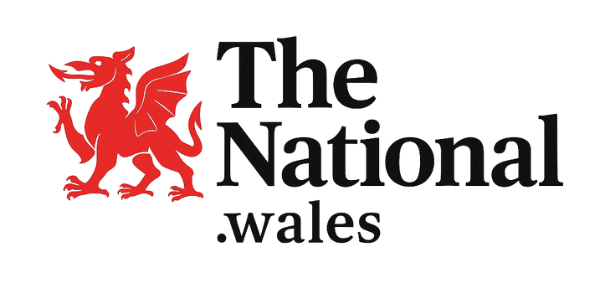Share:
St David’s Day, celebrated annually on March 1, is a vibrant tribute to St David, the patron saint of Wales, and a celebration of Welsh culture, traditions, and community spirit. Known as Dydd Gŵyl Dewi in Welsh, this feast day commemorates St David’s life, miracles, and legacy through parades, traditional foods, music, and acts of kindness inspired by his famous words, “Do the little things.”
The Significance of St David’s Day
St David’s Day, or the Feast of St David, honors Wales’ patron saint and celebrates Welsh identity with parades, costumes, concerts, and Eisteddfodau. Celebrated on March 1, the day marks St David’s death in 589 AD, a date fixed since his canonization in the 12th century by Pope Callixtus.
Despite its cultural importance, St David’s Day is not a bank holiday in Wales, though campaigns persist to change this law. St David’s guiding phrase, gwnewch y pethau bychain mewn bywyd (“Do the little things in life”), encourages small acts of kindness and cultural pride.
Who Was St David?
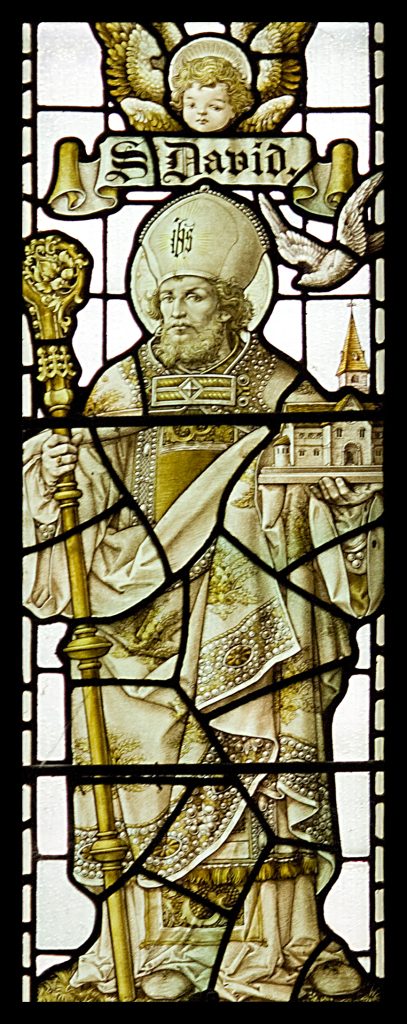
St David, or Dewi Sant in Welsh, was a monk born between 462 and 515 AD near the present-day city of St Davids in southwest Wales, possibly during a violent thunderstorm. He founded numerous religious communities and churches across Wales and England, with some accounts suggesting he established Glastonbury Abbey.
St David performed miracles, such as restoring sight to his blind teacher, Paulinus, and raising a hill beneath his feet at Llanddewi Brefi to address a crowd, enabling all to see and hear him. Another legend claims a dove landed on his shoulder during this sermon, symbolizing divine favor. St David lived over 100 years, dying on March 1, 589 AD, and his last words to followers were, “Be joyful, keep the faith, and do the little things that you have heard and seen me do”.
He was a vegetarian, reportedly consuming only leeks and water, earning the nickname “David the water drinker”. St David is believed to have traveled to Jerusalem, returning with a stone now placed on an altar in St David’s Cathedral, built on his original monastery site. Medieval stories link him to King Arthur, suggesting he was either Arthur’s nephew or his mother’s nephew, and he was descended from Welsh princes.
Uniquely among UK patron saints, St David was born in Wales, unlike St Andrew (Palestinian), St Patrick (Romano-British), or St George (Roman with Greek ties).
National Symbols of Wales

The Welsh flag, featuring a red dragon (Y Ddraig Goch), is a central symbol waved proudly on St David’s Day. The dragon’s use dates to the 7th century during the reign of King Cadwaladr of Gwynedd, with the oldest recorded mention in Nennius’s Historia Brittonum around 820 AD. Claimed by some as the oldest national flag still in use, the modern design—a red dragon on a white and green background—was standardized in 1959. The flag of St David, a yellow cross on a black background, also flies prominently during celebrations.
The leek, a national emblem, is worn pinned to clothing or eaten on St David’s Day. Its association stems from legends, including St David’s vegetarian diet of leeks and water and his instruction to Welsh soldiers to wear leeks in their helmets to distinguish themselves from Saxons in battle, aiding their victory. Historical accounts note Welsh archers at the 1346 Battle of Crécy wearing leeks, a tradition later referenced in Shakespeare’s Henry V. During the Tudor period, monarchs’ guards wore leeks on their uniforms, and Princess Mary received a leek in the 16th century.
By the 17th and 18th centuries, the king and court commonly wore leeks on St David’s Day. The daffodil, another national symbol, is worn as pins or badges and given as gifts on March 1. Introduced in the 19th century as a prettier alternative to the leek, its adoption was championed by David Lloyd George, the only Welsh UK Prime Minister, who wore it at the 1911 investiture of the Prince of Wales at Caernarfon Castle.
The Welsh word for daffodil, cenhinen Bedr (“Peter’s leek”), links it to the leek, and its early spring bloom aligns with St David’s Day. David Lloyd George promoted the daffodil for its optimistic symbolism as nature’s herald of spring.
Traditional Celebrations and Events
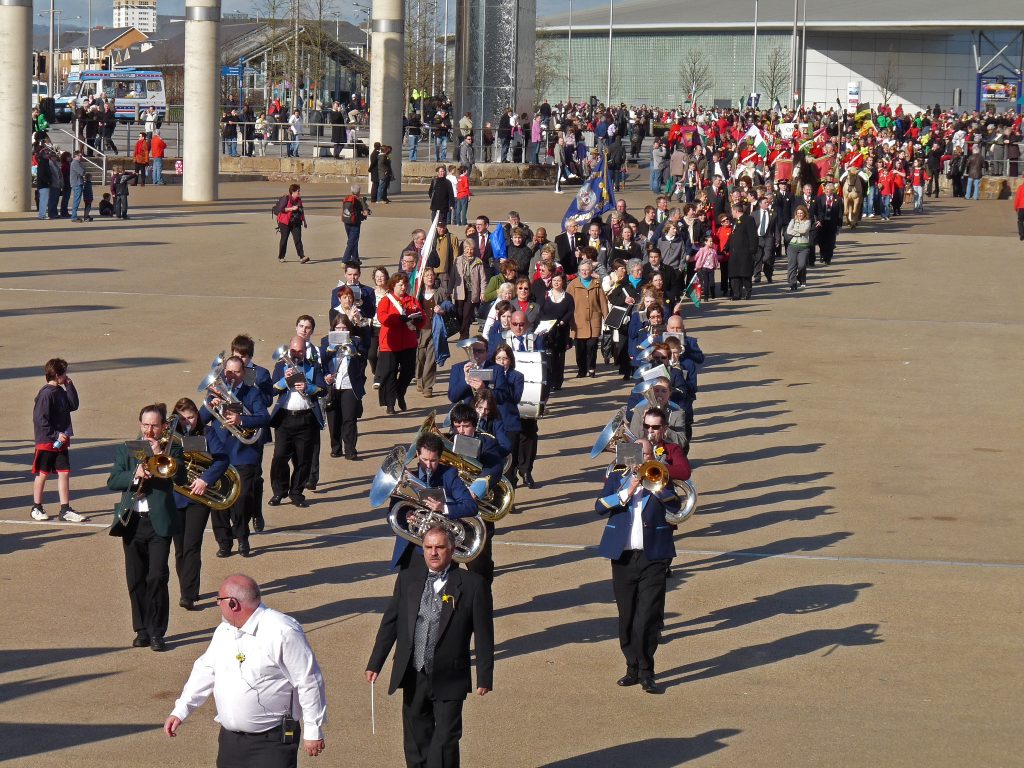
The National St David’s Day Parade in Cardiff is a highlight, featuring schoolchildren in traditional Welsh costumes, theatre groups, and dragon performances, with daffodils and leeks adorning participants. Cardiff’s parade includes concerts, a food festival from February 26 showcasing Welsh produce, and free entertainment at Cardiff Central Library. In 2010, the seventh annual parade coincided with the Royal Welsh Regiment’s Changing of the Guard at Cardiff Castle, marking their return from Afghanistan.
Other towns, like Colwyn Bay, host parades with hundreds of citizens and schoolchildren, complemented by local events. Swansea’s “St David’s Week,” launched in 2009, features musical, sporting, and cultural events, followed by a two-day food festival in 2018. St Davids, the smallest UK city with a population of about 1,500, holds a Dragon Parade and the Ras Dewi Sant marathon along the Pembrokeshire Coast Path, one of the toughest and most scenic races globally.
The city, known as Tyddewi (“House of Dewi”), decorates with bunting and hosts cathedral events, with a pilgrimage to St David’s Cathedral equaling one to Rome or two equaling one to Jerusalem, as declared by Pope Calixtus II. Eisteddfodau, festivals of music, language, and culture, are a cornerstone of St David’s Day, with schoolchildren performing Welsh dances, folk songs, poetry, and visual art. Schools and universities may hold mini-Eisteddfodau, while the Cylch Eisteddfod, part of Eisteddfod yr Urdd, often occurs around March 1.
Homemade Eisteddfodau challenge participants to compete in poetry and prose, with winners symbolically ordained to the Gorsedd of the Bards. Cardiff’s St David’s Hall hosts a concert by the BBC National Orchestra and Chorus of Wales, performing traditional Welsh songs. Swansea’s Croeso festival, a two-day event, includes music, food stalls, cookery demonstrations, and a “daffodil dash”.
Traditional Welsh Costume

Girls wear traditional Welsh costumes on St David’s Day, including long woollen skirts, aprons, white blouses, woollen shawls, and tall black hats or bonnets with frilled white trim. Boys don shirts with waistcoats, neckerchiefs, breeches, black trousers, long woolly socks, and black shoes, often in red and black plaid patterns. Originating in 18th-century rural Wales, the costume included woollen dresses over corsets, printed neckerchiefs, petticoats, and knitted stockings.
Lady Llanover promoted this national dress in the 1830s to foster Welsh identity and language, though its popularity waned by the late 1800s, now worn mainly for cultural events like St David’s Day. Modern takes include reimagined Welsh hats by artists Meinir Mathias and Seren Morgan Jones, alongside contemporary headwear like the Urdd bobble hat or bucket hat. Children may craft miniature Welsh hats for toys or wear red, the color of the Welsh dragon, to raise funds for charities.
Food and Drink Traditions

St David’s Day features traditional Welsh foods, including cawl, a stew of lamb, potatoes, and winter vegetables with family-specific recipes. Bara brith, a fruit loaf made with tea, is served with butter. Welsh cakes (picau ar y maen), small flat cakes cooked on a bakestone, come in flavors like cheese and leek (Mamgu Welshcakes), chocolate orange (Fabulous Welshcakes), or jam and cream (Bakestones).
Welsh rarebit, a spiced cheese on toast with ale and mustard or alternatives like Worcestershire sauce or wine, is a staple. Laverbread (bara lawr), a seaweed delicacy boiled for hours, is eaten with bacon and cockles for breakfast, sourced from The Pembrokeshire Beach Food Company or Blas ar Fwyd.
Leeks feature in dishes like Glamorgan Sausage, Cenarth’s leek cheese, Dragon’s mature cheddar on Cradoc’s leek crackers, or Edwards of Conwy and Myrddin Heritage’s pork and leek sausages. Leek soup is a vegetarian alternative.
Welsh drinks include beers from over 80 breweries, such as Monty’s, Tiny Rebel’s Cwrw Cwtsh, or non-alcoholic Drop Bear Beer. Spirits like Penderyn whisky, Dyfi Gin, Aberfalls & Halen Môn’s toffee liqueur, or Barti rum are popular, alongside Welsh wines from Llaethlliw or Montgomery Vineyards. Cocktails like “Welsh Gold” (Penderyn whisky), “Hoffi Toffi” (toffee liqueur), or “Bartholomew’s chest” (Barti rum) add flair. Toasting with iechyd da (“cheers”) in cozy Welsh pubs is customary.
Random Acts of Welshness
St David’s Day encourages “Random Acts of Welshness” to embody hwyl (spirit) and kindness. These include:
| Activity | Description |
|---|---|
| Flying the Draig | Displaying the Welsh flag with its iconic red dragon. |
| Wearing a Leek | Pinning a leek to your clothes, linked to King Cadwaladr’s 7th-century battle. |
| Giving a Cwtsh | Sharing a warm, reassuring hug (“kutch”). |
| Giving a Love Spoon | Presenting carved spoons with symbols of love, seen at St Fagans or from Ceini Spiller. |
| Speaking Cymraeg | Learning Welsh via Duolingo, Say Something in Welsh, or Nant Gwrtheyrn. |
| Buying a Pint | Buying Welsh drinks for Dewi, Dafydd, Dai, or Non. |
| Giving Daffodils | Sharing Wales’ national flower as a gift. |
| Wearing Welsh Fashion | Wearing knitwear from Mabli Knits, Y Lein, Clyd, or Tufties. |
| Dancing | Dancing to Welsh artists like Tom Jones or playlists such as Creative Wales. |
| Eating Cheese | Sampling Caerphilly or cheeses from Snowdonia, Caws Cenarth, Blaenafon Cheddar. |
| Planting a Tree | Planting one tree per household for the National Forest for Wales. |
| Sharing Welsh Cakes | Baking or gifting traditional Welsh cakes. |
| Visiting Castles | Exploring over 600 Welsh castles, free visits on March 1. |
| Wearing a Welsh Hat | Wearing a traditional het Gymreig or modern versions. |
| Singing the Anthem | Singing “Gwlad, Gwlad” with or without instruments, including BSL versions. |
| Listening to Miwsig | Enjoying playlists like Ymlacio, Gyrru Gyrru Gyrru, or O Gymru. |
| Feasting | Cooking Welsh meals using lamb or local ingredients. |
| Reading Folklore | Exploring legends and tales from Welsh mythology. |
| Eating Half and Half | Trying a curry served with chips and rice. |
| Eating Laverbread | Enjoying the traditional seaweed delicacy. |
| Exercising | Running or cycling in the shape of Wales or a dragon, inspired by Lowri Morgan. |
| Playing Tippit | Playing a pub coin game with six players, also called Up Jenkins. |
| Saying Shwmae | Greeting with “shwmae” and sharing Welsh cakes. |
| Buying Welsh | Supporting Welsh businesses like Alis Knits. |
| Swimming | Joining clubs like Dawn Stalkers for a patriotic swim. |
| Dressing Pets | Dressing pets in daffodil collars. |
| Making Cocktails | Creating drinks with a Welsh theme. |
| Saying Cheers Drive | Thanking drivers with “diolch”. |
| Winning a Chair | Hosting poetry contests like those in the Eisteddfod. |
| Designing Daffodils | Making floral art via courses from the National Botanical Garden of Wales. |
| Using a Siol Fagu | Carrying children in a Welsh wool blanket sling. |
| Making a Welsh Hat | Crafting tiny Welsh hats for toys. |
| Clog Dancing | Dancing in clogs with traditional challenges. |
| Wishing Dydd Gŵyl Dewi Hapus | Saying “Happy St David’s Day” in Welsh. |
| Donating | Supporting local charities like Give DIFFerently. |
Educational and Community Engagement
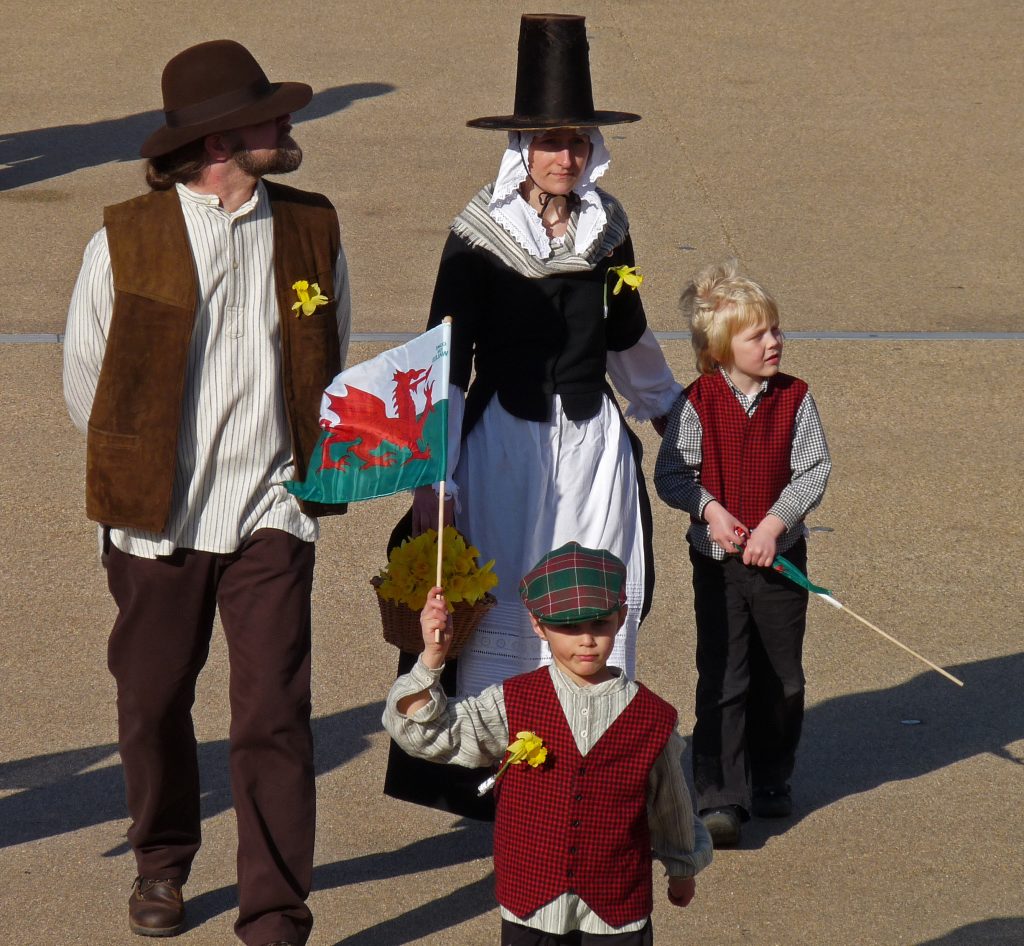
Schools host assemblies, mini-Eisteddfodau, and lessons about St David, with children wearing Welsh costumes or red for charity fundraising. The All About St David’s Day PowerPoint and St David’s Day Fact File from Twinkl teach children about St David’s life, legacy, and celebrations. The Daffodil Activity Pack offers crafts like egg box daffodils, coloring pages, and paper bouquets to engage children with the national flower.
St David’s Day Recipe Cards provide instructions for making Welsh cakes and bara brith, teaching numeracy and cultural traditions. Church services, choir recitals by professionals or schoolchildren, and free admission to heritage sites enhance community involvement.
Global Celebrations
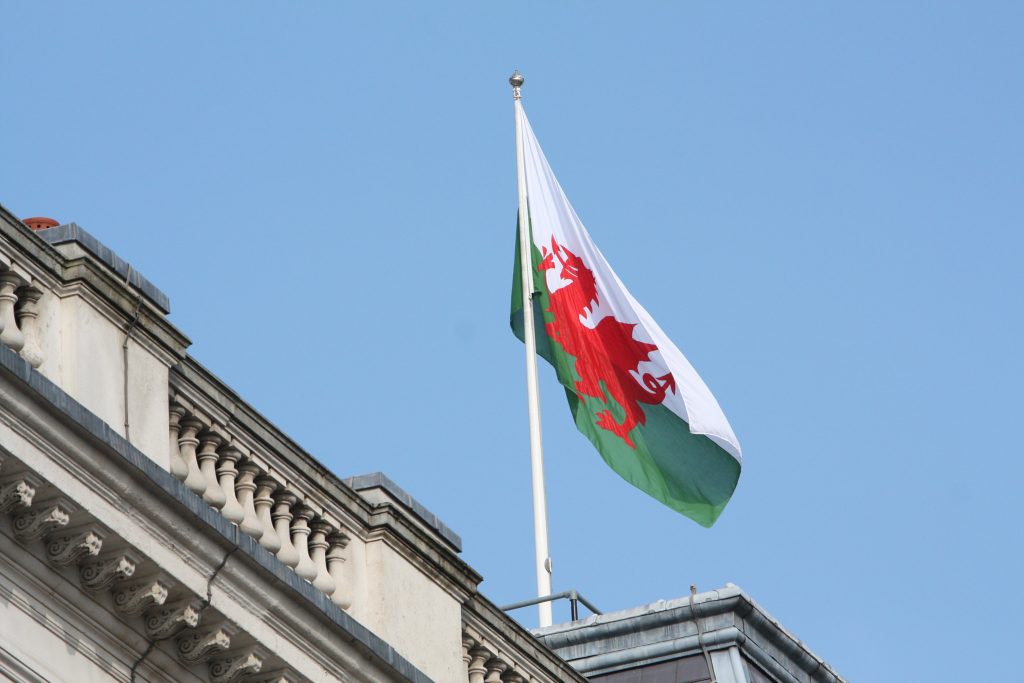
Beyond Wales, St David’s Day is celebrated internationally. Disneyland Paris hosts a Welsh-themed week with fireworks, parades, and characters in Welsh attire. Washington, DC, holds a congressional reception at the US Capitol for the First Minister of Wales’ biannual visits. The Los Angeles St David’s Day Festival, the largest in the US, features an Eisteddfod, Celtic marketplace, classes, and concerts.
Historical and Military Traditions
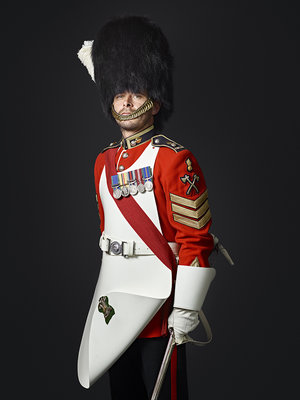
The leek’s military significance is evident in Welsh Regiments of the British Army incorporating St David’s cross, his image, or songs into formalities. St David’s connection to battles, possibly ordering soldiers to wear leeks for identification, ties to legends of Welsh victories. Swansea’s Castle Square fountain is dyed red to symbolize the Welsh dragon.
Conclusion
St David’s Day is a multifaceted celebration of Wales’ patron saint and cultural heritage, uniting communities through parades, Eisteddfodau, traditional foods, and acts of Welshness. From wearing leeks and daffodils to singing Gwlad, Gwlad and savoring cawl, the day embodies St David’s call to “do the little things.” Whether in Cardiff’s grand parade, St Davids’ sacred cathedral, or global events like Los Angeles’ festival, March 1 is a testament to Welsh pride and resilience, inviting all to join in the hwyl.
Note: Updated upto May 2025
